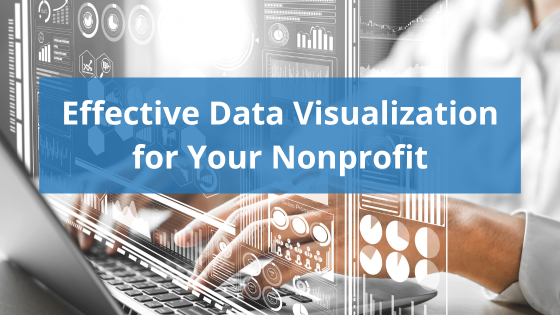Data is one of the most powerful tools in a nonprofit's arsenal, but it is only as good as how you use it. Whether you're making a report to internal stakeholders, seeking out donors, or just trying to show off your program’s effectiveness, you need an impactful way to share information. Data visualization or “business intelligence” in a tool like Microsoft Power BI an powerful way to turn your information into insight for any audience.
Identify the Why
There are many ways you can utilize your data and many stories it can tell, so it is critical to understand why you are creating a visualization before you start. First, what do you want to accomplish with this data? Secondly, you must identify what sources give you the tools you need – combining your various internal data with each other and with public data will enrich and connect your organization to the rest of the world. Then, you need to know who you are trying to reach. Your board is probably interested in different information than your newsletter subscribers, and no two data sets can be treated the same. Determining your purpose and your audience will help you gather the right data and find the best way to
Choose the Right Data Visualization
There are many ways to visualize data, and it can be difficult to determine which option to choose. Data visualizations can take the form of:
- Charts
- Graphs
- Maps
- Tables
- Heatmaps
- And more!
Within each of these categories there are dozens of ways to present your data, and bringing them together effectively can create deeper understanding across audiences. An internal audience you might use a live dashboard to monitor program outcomes or financial updates. On the other hand a bold infographic highlighting specific dimensions will impact your donors or social media followers and provide an overview of your work and success. The right data visualization can make all the difference to your audience and choosing the wrong one can be ineffective at best, and misleading at worst.
Tell a Story
No matter how well-presented they are, numbers alone will not engage your audience. By taking your data and considering how it relates to your initial goal, you can build a compelling story to drive engagement. For instance, if you are trying to increase donations for a specific youth program, you could start by introducing the issue area, including a few key data points, and end with a call to action that encourages your audience to get involved or donate to your program. Creating a clear, simple visual story can attract and engage new audiences without overwhelming them with the finer details.
Don't Forget Your Ask
Before you created your data visualization, you had a set goal you wanted to accomplish. Your data points alone won't be enough to achieve that goal. After you have tied together your data in to visuals, and your visuals into a story, you still need to bring your audience back to your goal. In some situations that may be driving program effectiveness by subscribing your staff to daily dashboard updates, or by integrating a powerful infographic into your email blasts and website. Your goal will guide how you get your beautiful data visualization in front of the eyes that need to see it, and is a core part of the lifecycle of your data.
Nonprofits can use data visualization in a variety of impactful ways. No matter who is in your audience, visually engaging data presentations can make your points more accessible and actionable. The basics of data visualization should be enough to get you started, but we can help you explore your data lifecycle and your options for richer understanding of your information. If you have questions about data visualization, need help creating reports or dashboards, or want to discuss other aspects of Business Intelligence, please contact us.




Leave a Reply